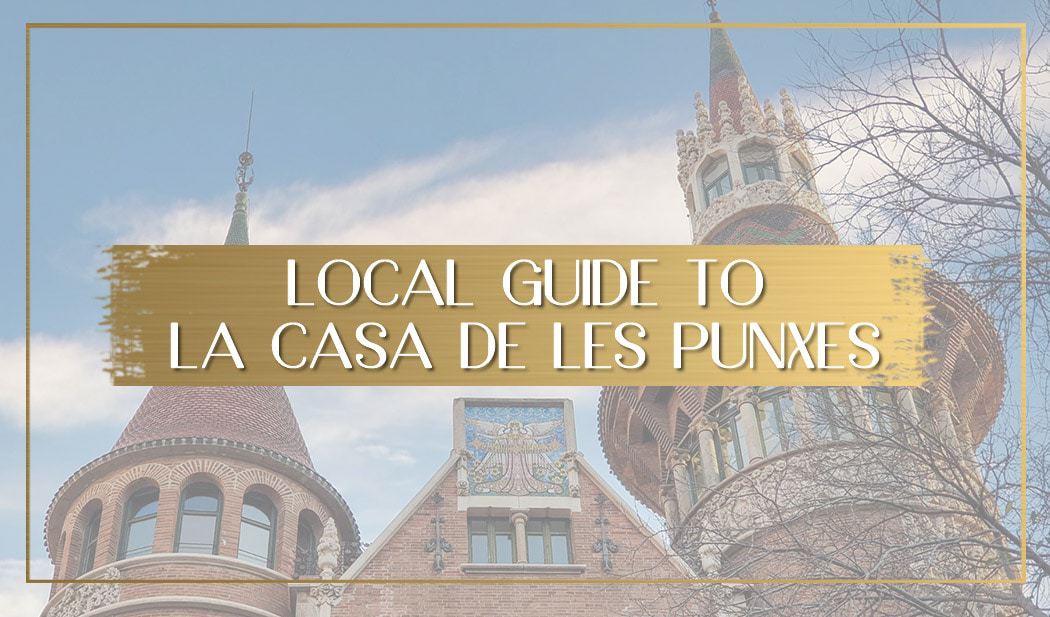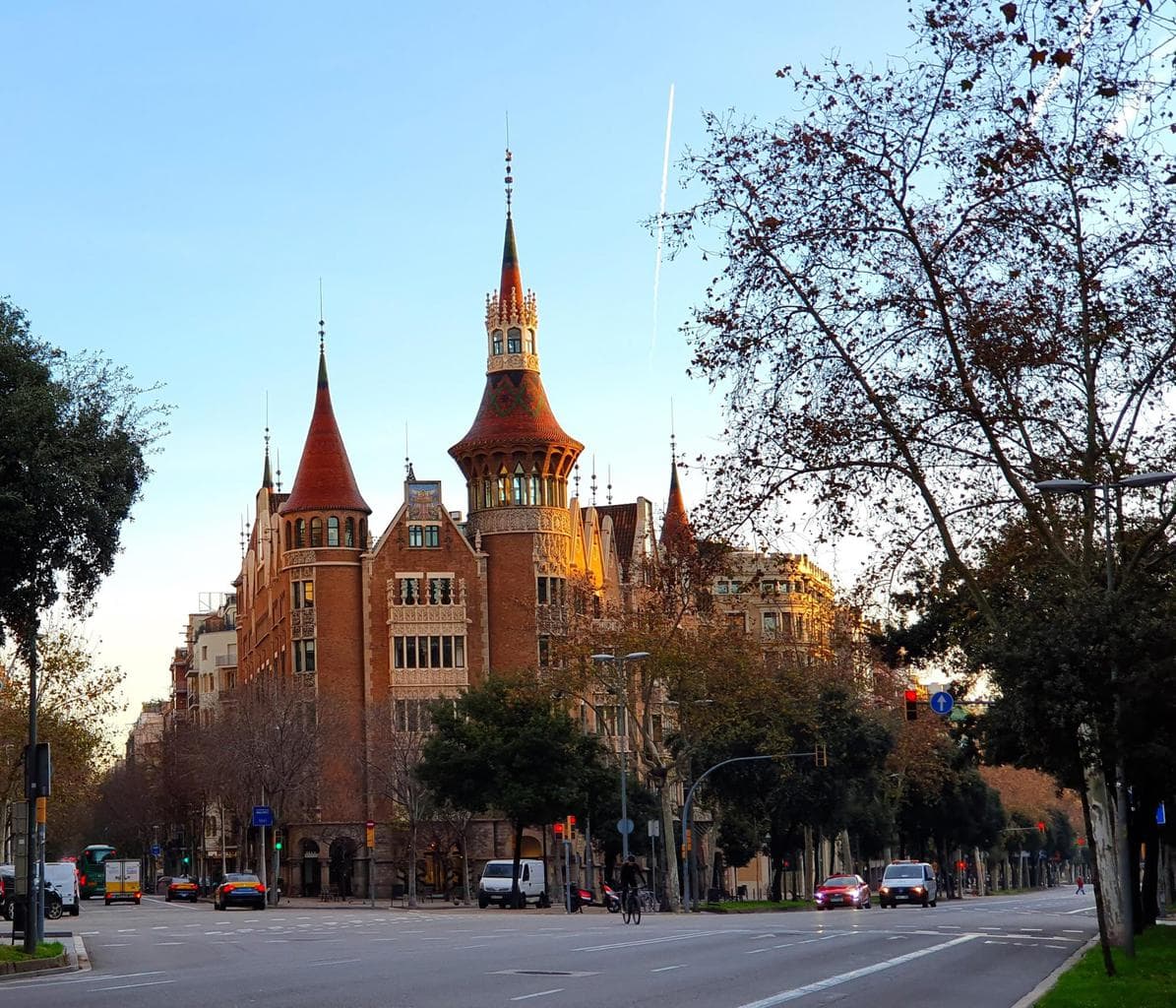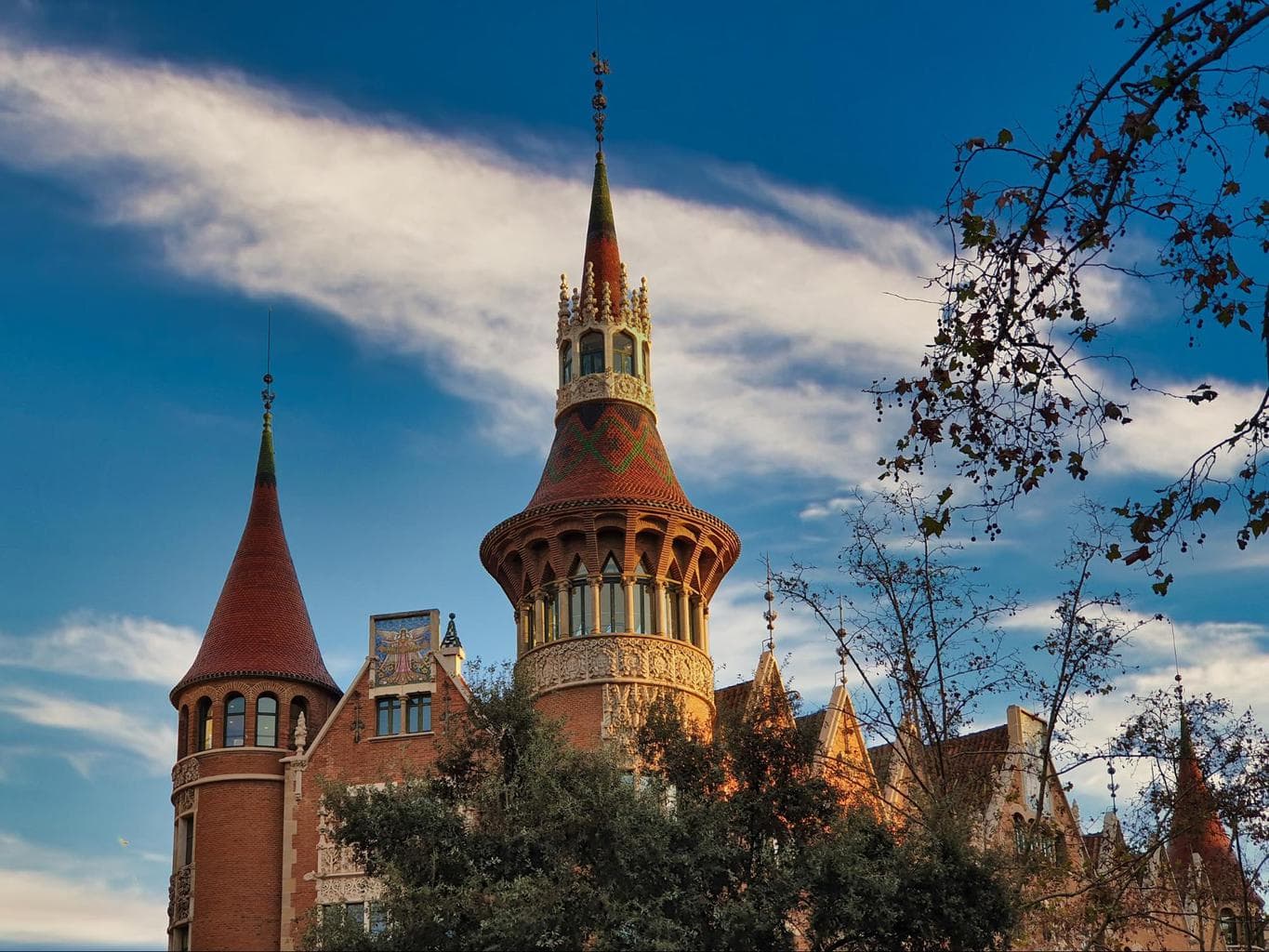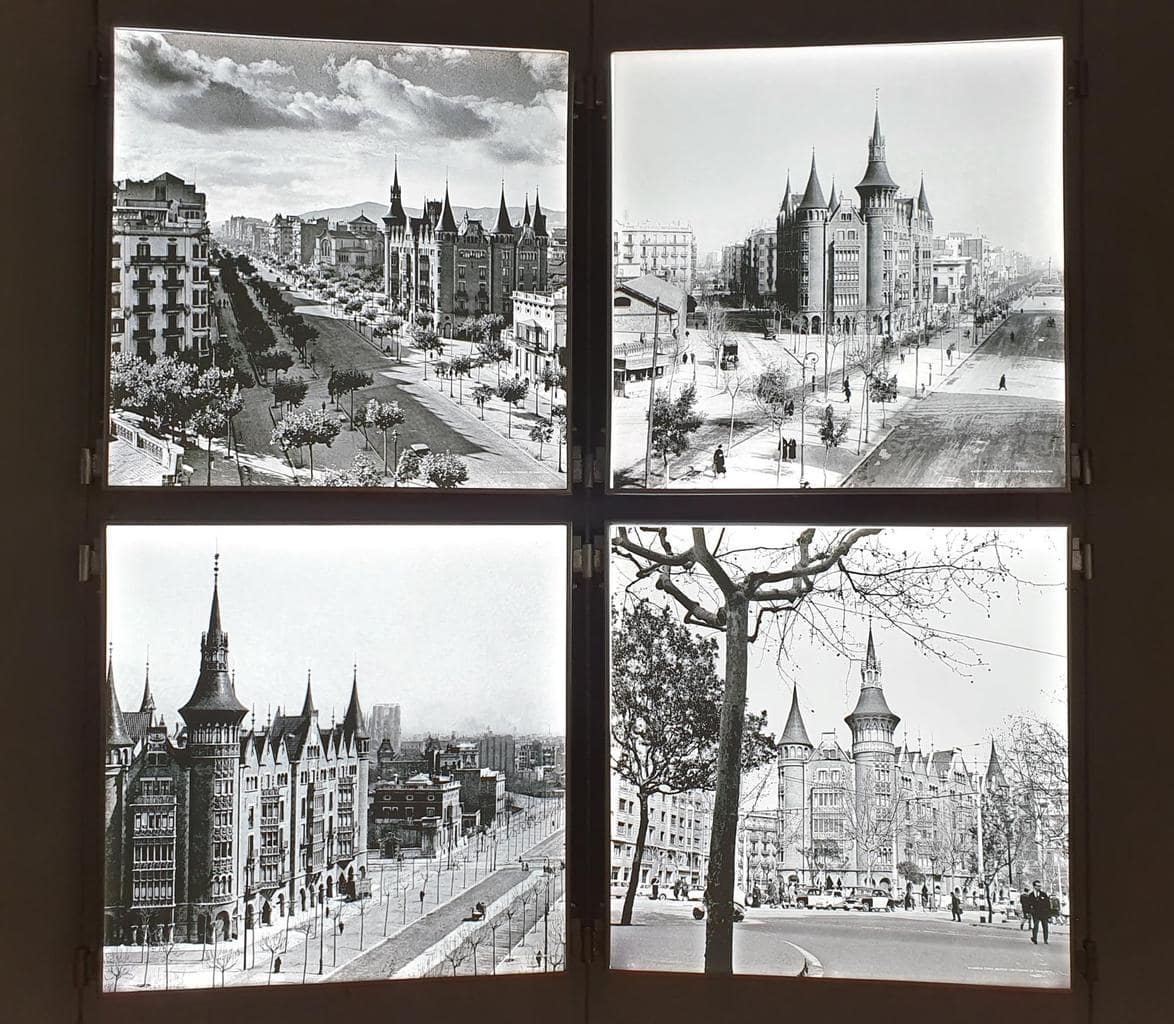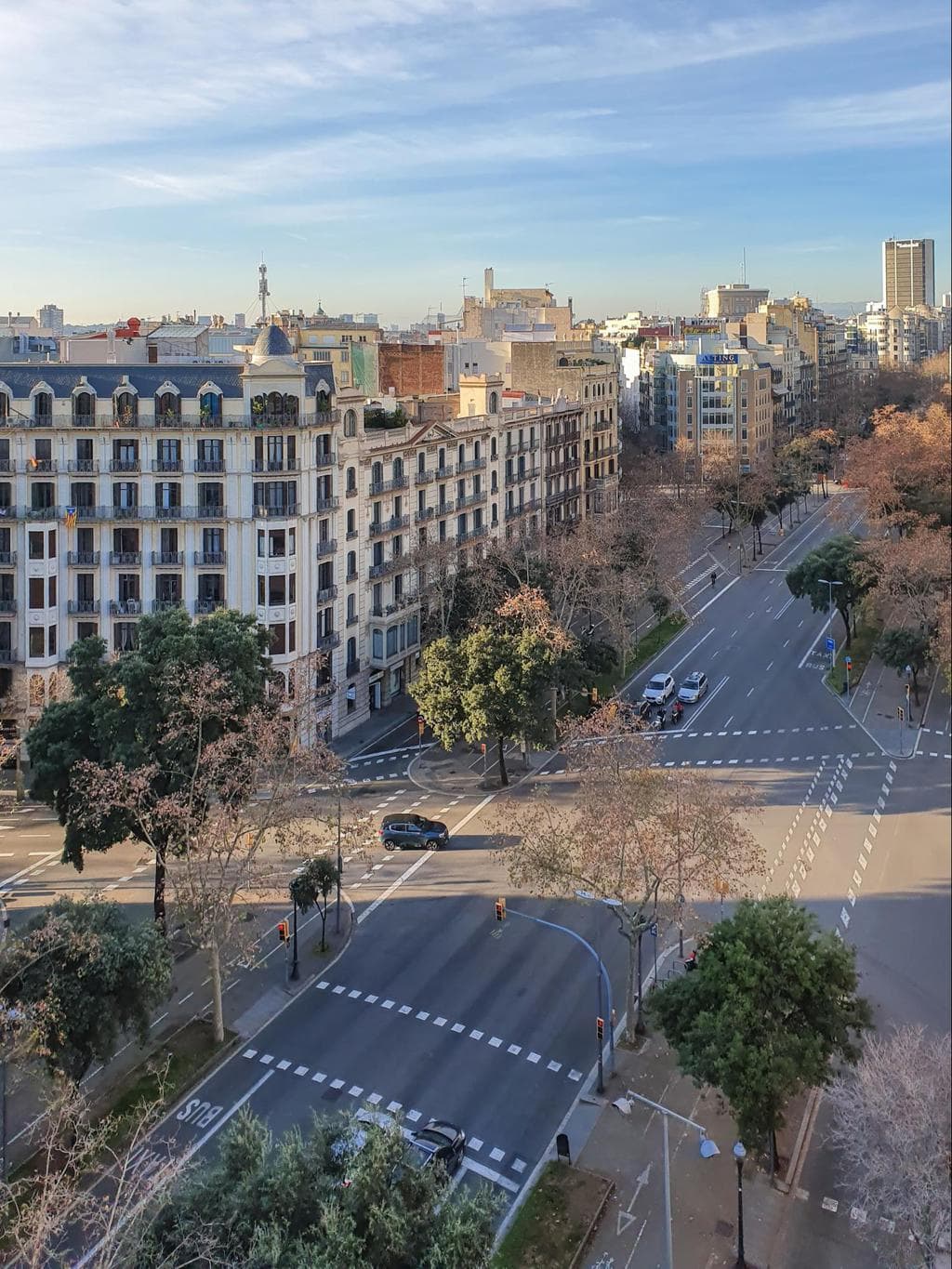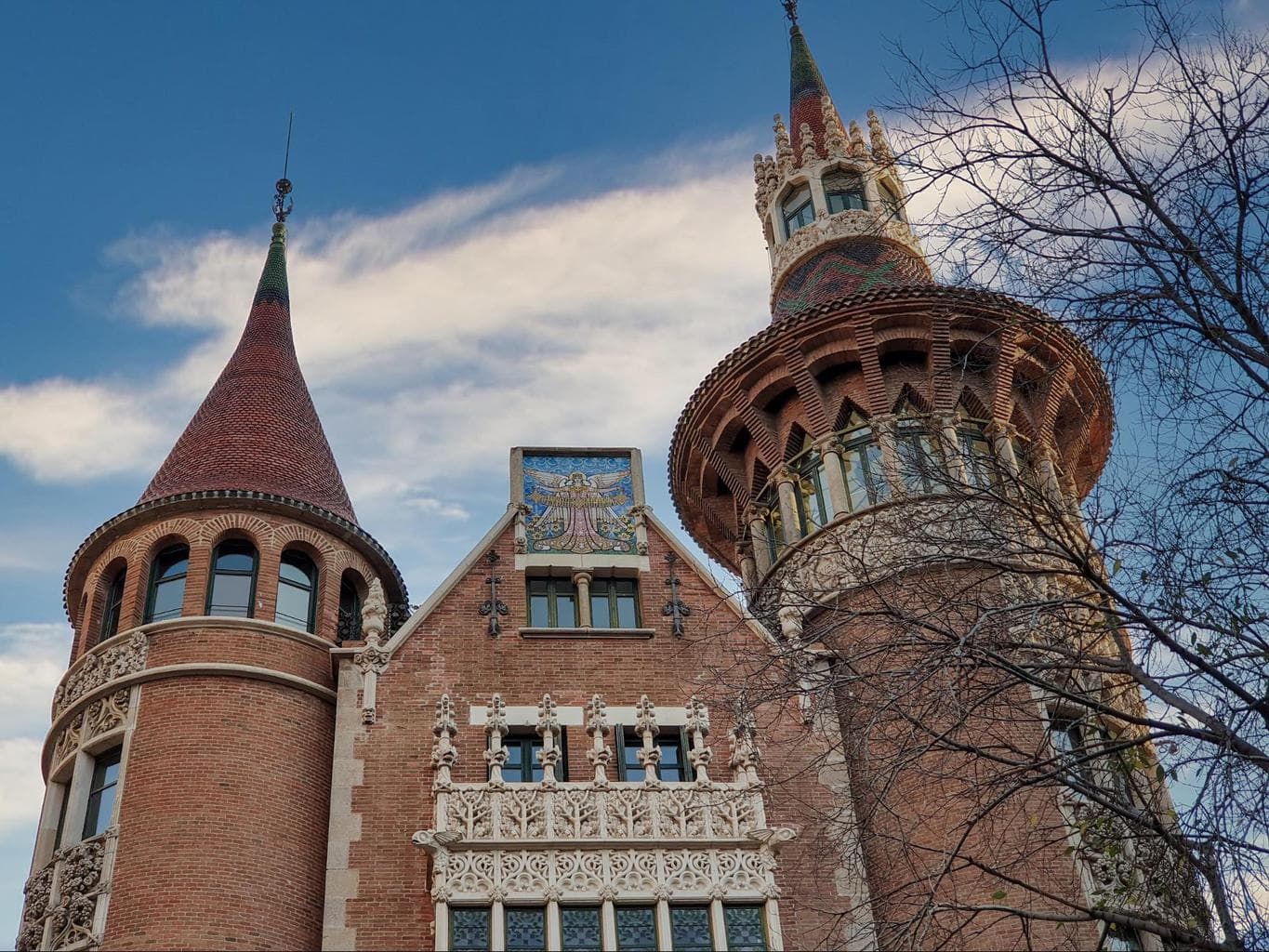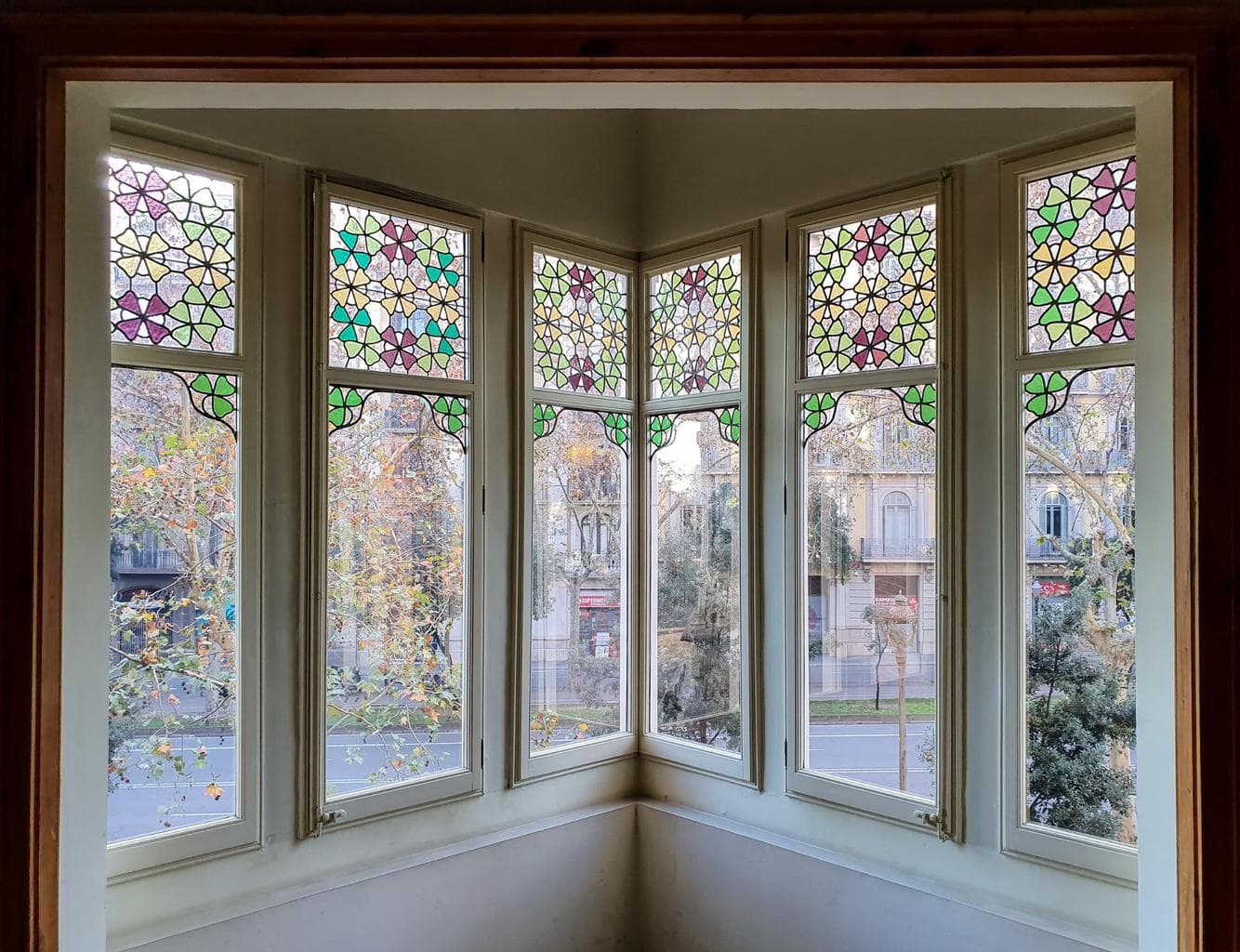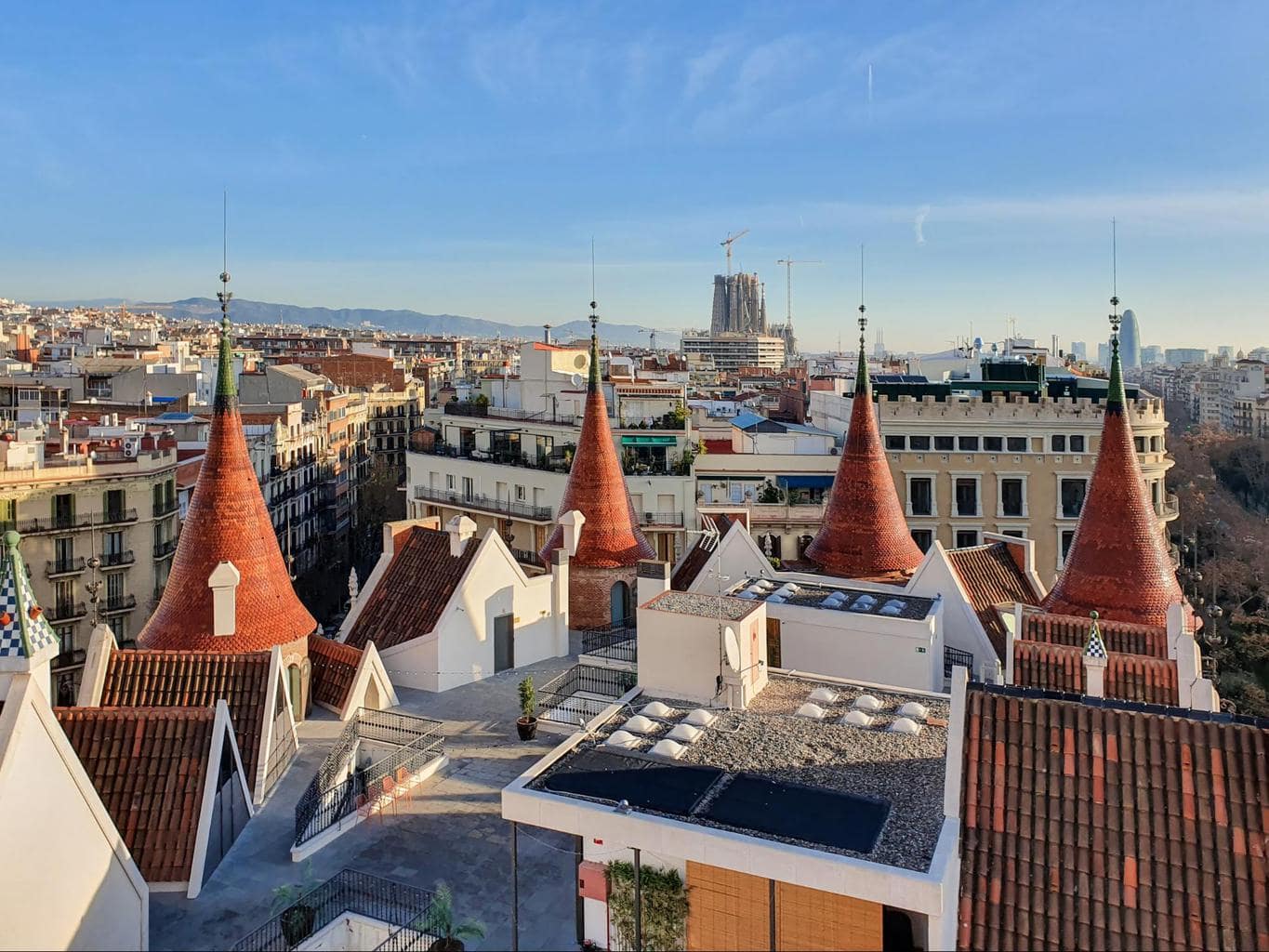
Update: La Casa de les Punxes is no longer open to the public for visits. We have kept this article as is for posterity. You can still visit the exterior and take some great pictures, so read on to find out more about the history and how to get there. La Casa de les Punxes is Barcelona’s fairytale castle and one of the least known new attractions in the city. In a cosmopolitan and modern city like Barcelona with so much to offer and so many Gaudi landmarks, it is surprising to find a building, in the heart of the city, that has a northern European castle look.
What are the origins of this beautiful building? Did a princess ever live there?
I visited on an early morning private tour before it opened the doors to the public to find out.
History of La Casa de les Punxes
Casa de Les Punxes is actually called Casa Terrades because it was built for the three Terrades sisters at the beginning of the 20th century, in 1905, by Josep Puig i Cadafalch, a contemporary of Gaudi and one of the three most important Modernist architects.
It is amicably and commercially known as Casa de les Punxes because of the pointed towers on the rooftop (punxes meaning point or pricks) which are so characteristic and unique of the building.
The three sisters built the house in Barcelona with their father’s inheritance, although the family was originally from Sabadell, a city about half an hour’s drive from Barcelona. While the brother inherited the business that made the family wealthy, the three younger sisters got enough money to build this house and made it big enough that they could live off the rent.
When they first moved to the city, they lived in Pl. Tetuan, but the location was too far from the Passeig de Gracia and Diagonal where the wealthy bourgeoisie lived at the time, so they decided to move to a more central location and hired Puig i Cadafalch, a family friend, to design it.
Very little is known about the building because the three sisters died without descendants and the brother who inherited the house, Bartomeu Terrades, coincidentally the second president of FC Barcelona, sold it on.
You can see references of the sisters’ youth when the house was built throughout the design of the house. Flowers are the most common decorative element and they represent springtime, the sisters’ stage in life, and the fact that they had no children.
Today, Casa de les Punxes is still partially a residential building inhabited by three families who pay old rental amounts while the rest has been renovated as a museum you can visit. There are also some offices and stores on the ground floor and the gift and ticket shop on the corner.
In 2010, a private investor acquired the building from Immobiliaria Colonial, the real estate group owned by Catalan bank La Caixa that had already carried out renovation works, for an undisclosed amount not far from EUR25 million. Subsequently, Casa de les Punxes was renovated and adapted to allow for visits which opened in 2016.
The architect, Puig i Cadafalch
Puig i Cadafalch was a renowned Catalan Modernist architect who lived around the same time as Gaudi and Domenech in Muntaner, the three most renowned architects of the movement and of the time.
Puig i Cadafalach was a prolific architect and led many famous projects among which are Casa Amatller, right next to Casa Batllo, Palau Baro de Quadras, Palau de la Generalitat de Catalunya, Casa Marti where the famous Els 4 Gats restaurant is, Caves Codorniu (one of the most famous wineries near Barcelona) and Palau Macaya (currently the headquarters of La caixa Foundation).
He designed dozens of other public structures, from columns to statues, including scenes from the Glory of Christ in Montserrat Monastery and was a recognized architect favored for his Neo-Gothic style that was more in tune with Modernisme’s traditional take.
The architect was not only known for his art but also as an archeologist and politician. He was a fierce Catalanist and campaigned for the language and culture of Catalonia from several of his political posts.
It is said that he got into politics to express his disagreement and discontent with the homogeneous design of Eixample, a neighbourhood in expansion at the time, and that this is why some of his buildings in the area were so different from everything around, to stand out.
Puig i Cadafalch took several political roles in his career. He was the second President of La Mancomunitat de Catalunya, the precursor of the Catalan Parliament and author of the Catalan constitution, l’estatut de Catalunya in 1919.
He was also an active Member of Parliament in Spain and Barcelona’s Mayor, all until the Dictatorship of Primo de Ribera put an end to democracy in 1925 and to Catalanism.
Puig i Cadafalch was born in 1867 and died in 1956, 30 years after Gaudi and was in exile in France during the Civil War as a result of his political views. Upon his return, he devoted himself to restoration projects as Franco no longer allowed him to practice.
The style and architecture of Casa de les Punxes
The building was indeed inspired by the Wagnerian Neuschwanstein Castle in Germany, just like Disney’s Cinderella castle, and other northern European castles such as the French medieval castle of Pierrefonds.
This inspiration came because the architect was also a politician and an archeologist and loved Nordic architecture, a unique influence not found in his contemporaries Gaudi or Domenech i Muntaner.
As an archeologist, Puig i Cadafalch was involved in several projects that got him closer to Catalonia’s Gothic and Romanesque heritage and he also drew inspiration from monasteries and churches to display a stronger Neo-Gothic style.
Casa de les Punxes also presents clear Neo-Mudejar influences that remind you of the Alhambra in Granada, a common source of inspiration for Modernisme that is also present in Gaudi’s first constructions like Casa Vicens.
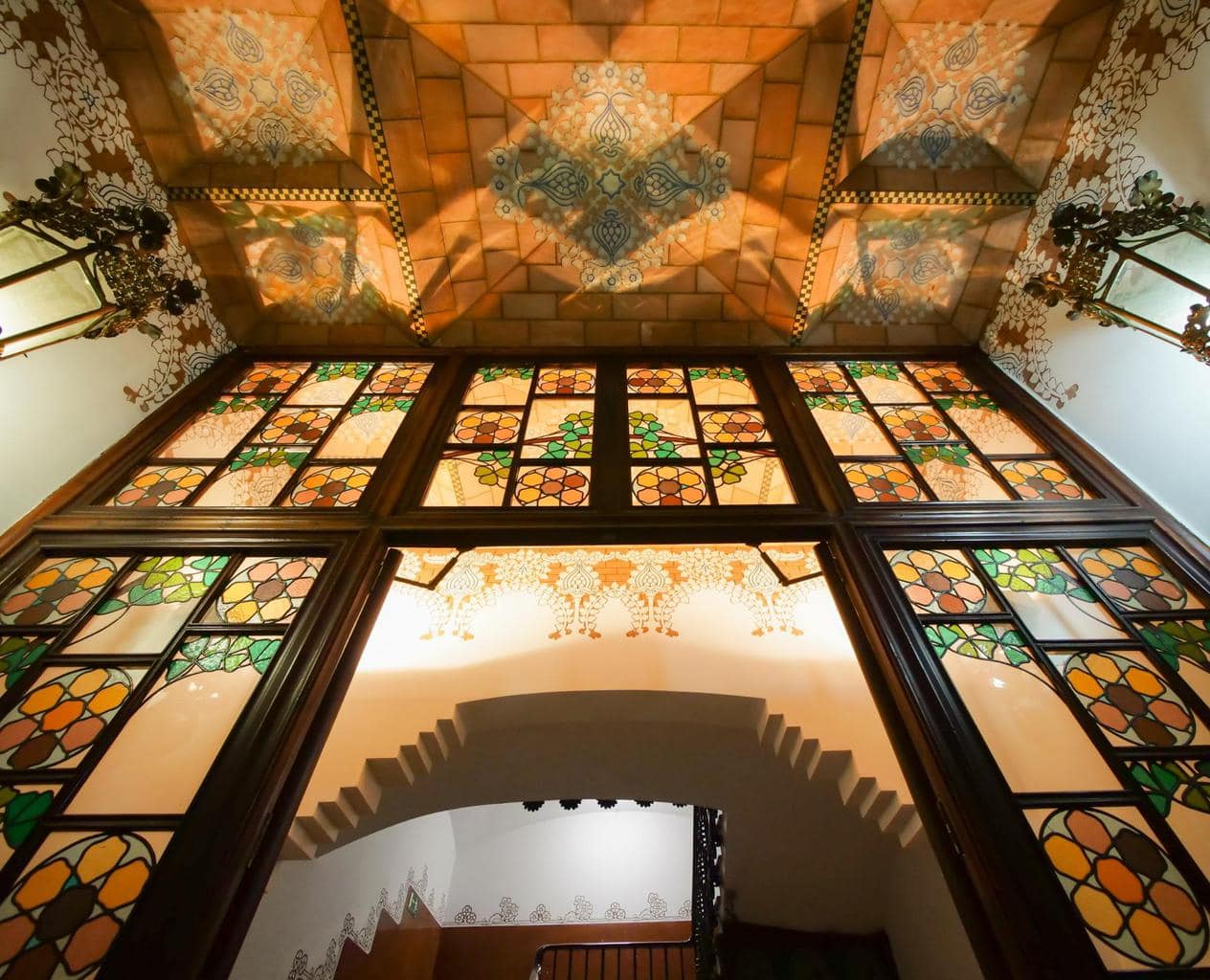
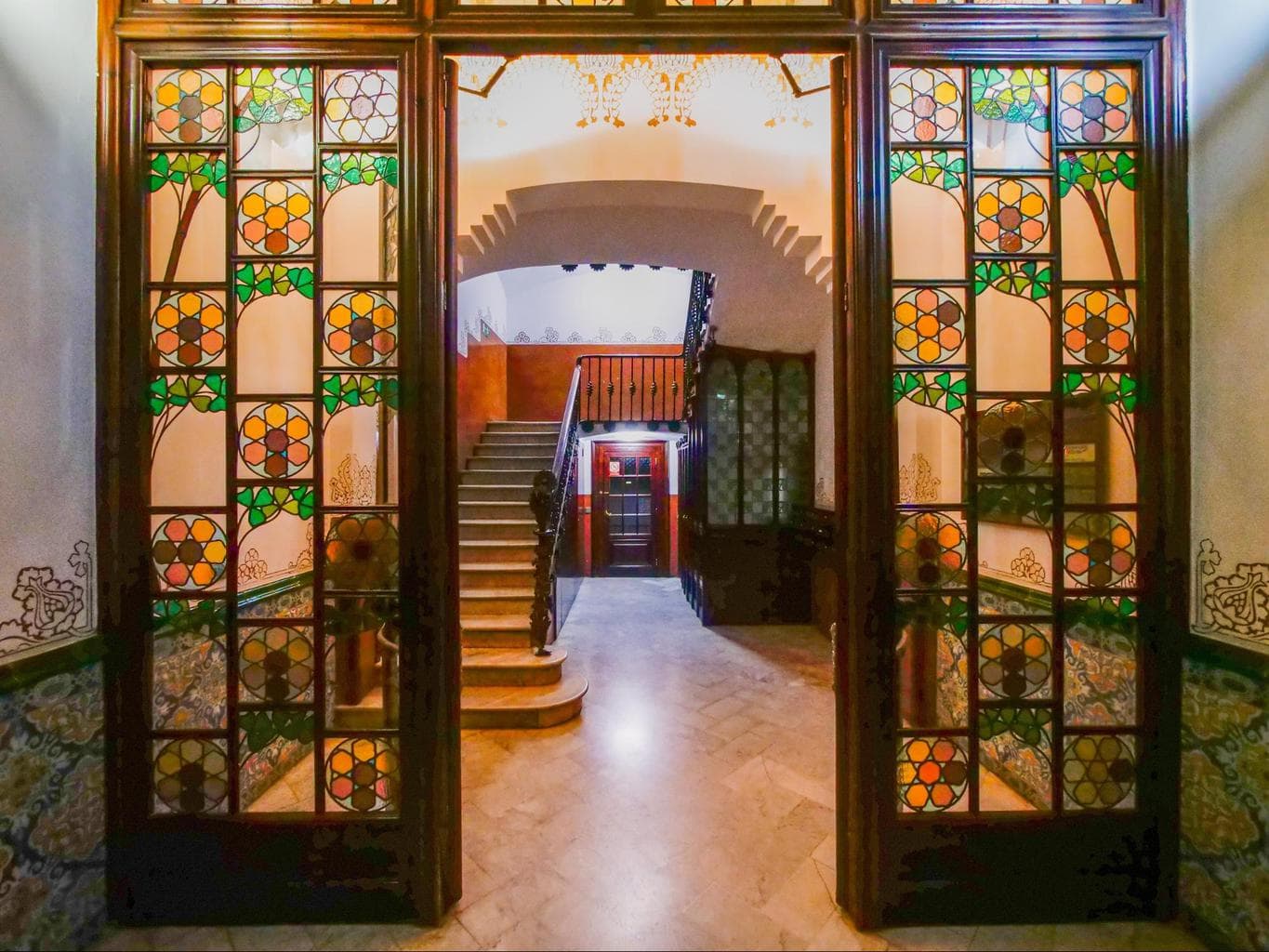
What made the plot where La Casa de les Punxes stands extra special was due to its location, on the corners between Carrer Bruc, Diagonal and Rosello, which created a hexagonal piece that cannot be found anywhere in Eixample. This allowed for the house to be standalone in the district.
Although from outside it appears as one single unit, Casa de les Punxes was in fact three houses and if you look closer you will be able to identify the six facades. Each of them belonged to one of the sisters who had a separate house within the same structure.
Despite having different owners and unique elements on the facade, the three were decorated in the exact same way inside so they are hard to distinguish.
Angela’s facade is the main one, the one facing Passeig de Gracia, you can recognize it because it has an angel at the top. She lived here with her mother. The entrance to Angela’s house is an impressive work of wrought iron.
If you continue along Diagonal you can see the next facade with St. George’s dragon. The figure of Saint George is a very popular one across Modernisme because it is a medieval legend that reminds locals of the golden age of Catalonia. He is also the Patron Saint of Catalonia.
Look closely at Saint George’s vertex and you will see a sentence that reads “Saint George, Patron saint of Catalonia, gives us back our freedom”.
You will find references to Saint George across almost all of Gaudi’s works too, most obviously at Casa Batllo whose rooftop is said to represent the victory of St. George over the dragon.
The next house is Josepa’s with St. Joseph at the top and the last one on Diagonal was Rosa’s house, with roses at the top. The facades are all on Diagonal because it was a major artery and the three sisters could display how they lived through the main balconies on the avenue.
As soon as you enter the house you will notice that the entrances are small and there is no space for coaches or horses. This was rare at the time when every rich family had them so it is assumed that they were kept elsewhere.
The tiles used inside La Casa de les Punxes are the exact same as found in Palau Macaya and this is because the architect had too many so he could use them in both buildings.
Notice that the number three repeats across all the designs of the house in reference to the three sisters who got along very well. The flower patterns are common throughout, from the wall tiles to the stained glass.
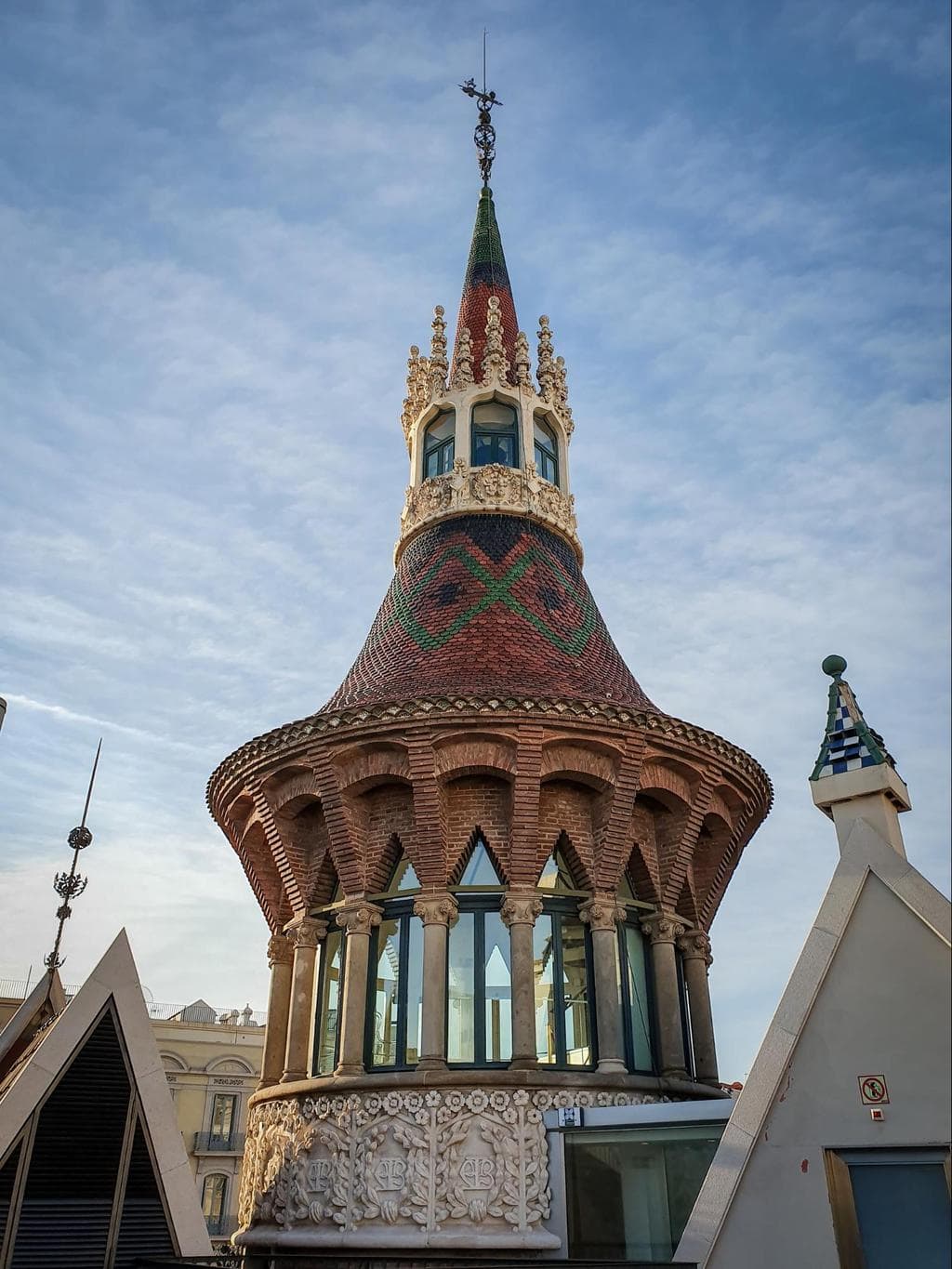
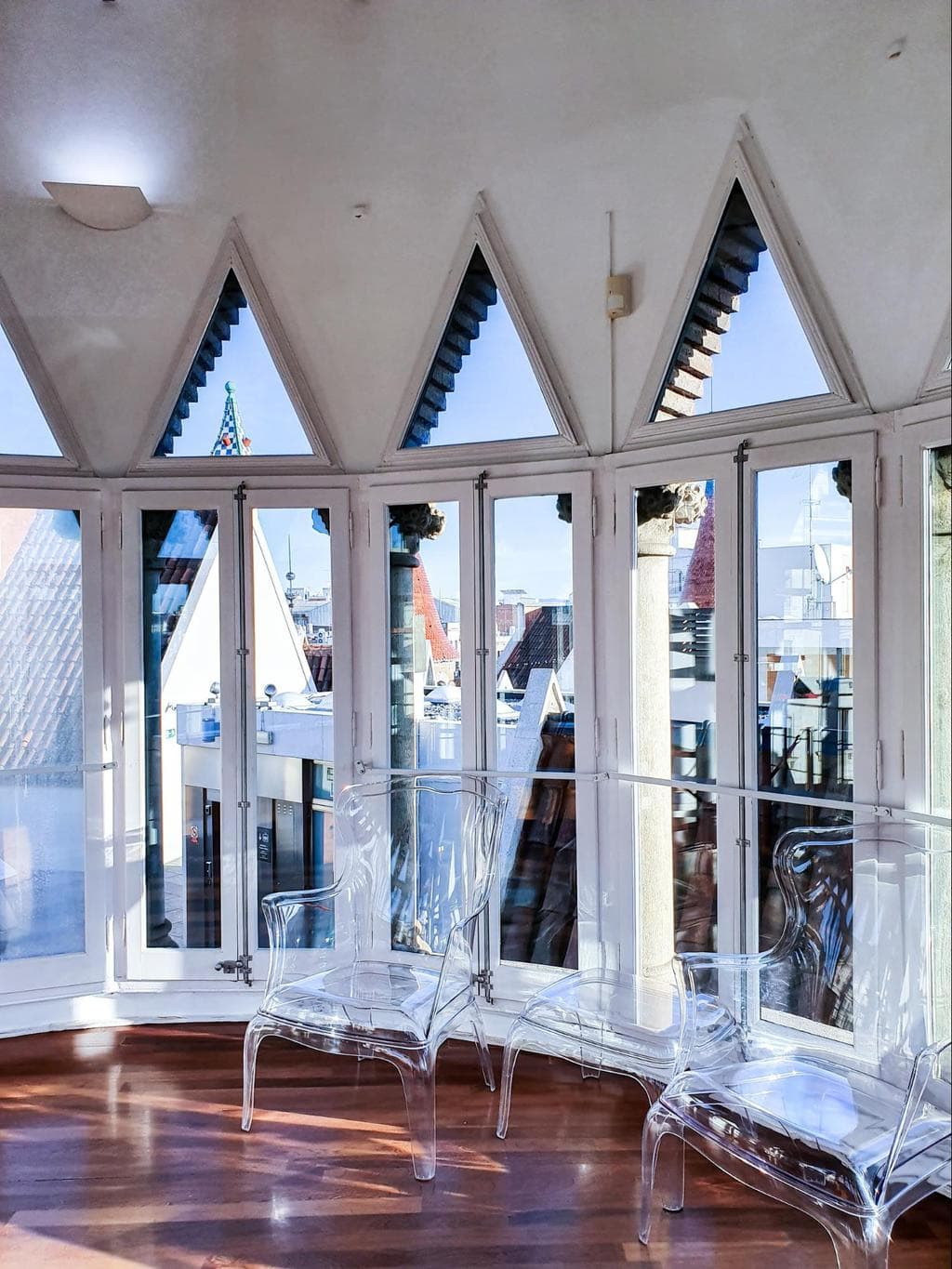
While from the outside La Casa de les Punxes is very decorated and has lots of flower motifs to represent spring, and to show off, inside it is very sober and simple and seems to represent winter. This is because the sisters were modest and classic and preferred their private lives to be less extravagant.
Like with all other modernist buildings in Eixample, the house was built with the idea of renting out the upper floors to other families and the ground floor to businesses. The three sisters lived on the main first floor off the rental income as they never worked and only Josepa married.
One of the elements that differentiates the building from others in Eixample is the lack of a large inside courtyard. For Casa de les Punxes, Puig i Cadafalch replaced this common architectural component with several smaller skylights that channeled the light.
This was because having a large interior courtyard would have taken up too much space and made it impossible to have three houses.
The house was very modern for the time and had several luxury elements. The elevator is from 1906 and still works, in fact we took it to start the tour.
Casa de les Punxes, like many other important buildings in Barcelona, has a lovely rooftop. Unlike Gaudi’s buildings, known for their rooftop chimneys, Casa de les Punxes rooftop has the pointy tiled towers that make the house famous.
The rooftop of Casa de les Punxes was where the service lived because nobody could see them from the street. Each of the small towers has green and brown tiles that resemble the scales of Saint George’s dragon and with time they were rented out to artists and others who enjoyed great views.
We got the chance to climb up the spiral staircase to the top of the tallest tower, a space that is currently closed off to visitors but the museum is investigating how to open it to the public. The 360-degree views from there were stunning although the space was rather narrow.
Tours of Casa de les Punxes
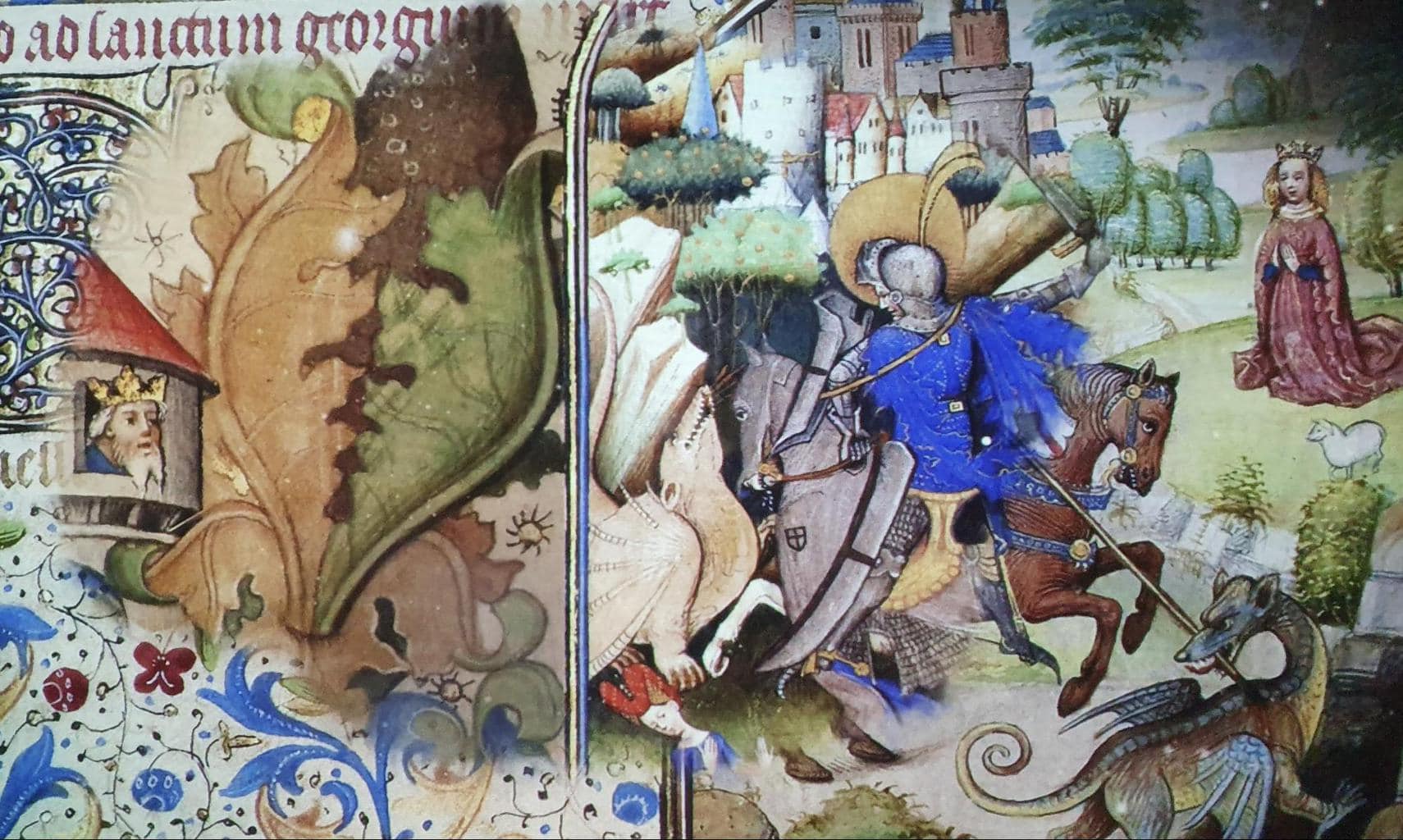
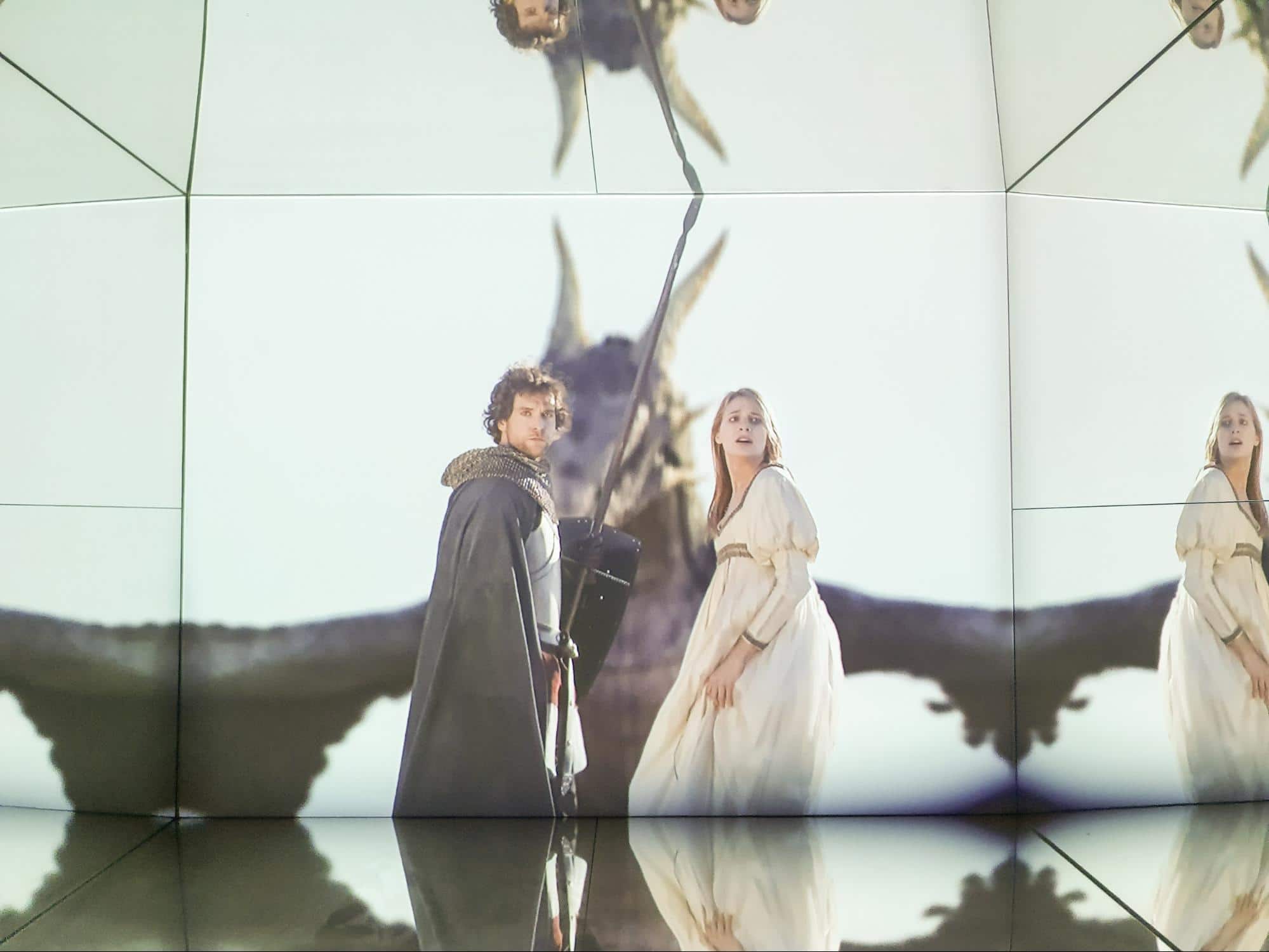
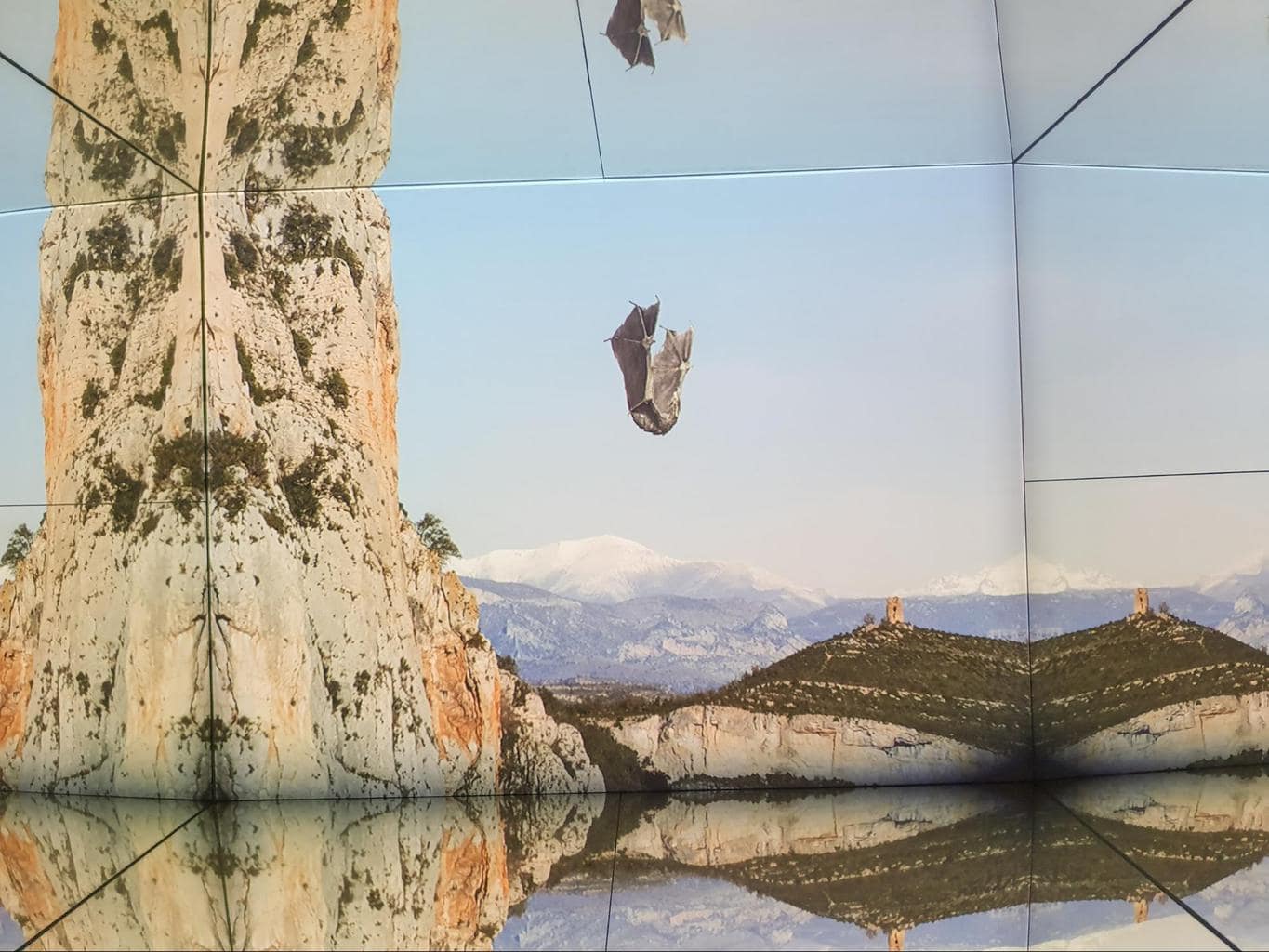
Tours of Casa de les Punxes usually visit Josepa’s house although we entered via Angela’s because the museum was still closed during our visit.
If you are visiting independently with an audio guide, you just need to follow the itinerary and the guide will play automatically as you enter every new space. You can stop as often as you want to read the exhibits and see the photographs on the walls, or simply to enjoy the view from the balconies.
Apart from following the audio guide you can also explore the permanent audiovisual experience that recounts the legend of Saint George, a medieval legend that is one of the most told and shared in Catalonia. This is not to be missed.
This mini movie with real actors, surround sound and great storytelling is one of the best insights into this piece of Catalan heritage and culture.
The legend is so famous and beloved in Catalonia that, as kids, we would play it at school on Saint George Day, on the 23rd of April. This is also our very own Valentine’s Day when couples, friends and families exchange books and red roses. It has to be one of the most beautiful traditions in the world.
There are several options to visit Casa de les Punxes, including some premium pairings with drinks and food.
- Self-guided tour of Casa de les Punxes which gives you an audio guide you can use to explore the house at your own pace. It comes in many languages. Book the audio guided tour here.
- Guided tours of Casa de les Punxes. If you want to visit with an expert in-house guide like I did, you can book a guided tour. Book the guided visit here.
- Exclusive visit with audio-guide and a glass of cava. For those who want to end the tour on a high note, this option gives you an audio guide and you end on the rooftop with a glass of cava to enjoy the views. Book the visit with a glass of cava here.
- Visit without the crowds. You can book a tour that starts at 9am an hour before the house opens, like I did. This gives you the chance to explore on your own, take as many pictures as you like and then enjoy a coffee or glass of cava on the rooftop as tourists arrive. Contact the team to book this tour.
- Visit with brunch. You can end your audio guided visit with a brunch at the cafeteria Matalaranya that is part of the house where you can enjoy what we call in Catalan, “un esmorzar de forquilla” or a fork breakfast. Contact the team to book this tour.
- Lastly, if you want to visit but don’t have a lot of time, you can book a brief tour that has a short introduction to the house and ends at the rooftop for the best views. Contact the team to book this tour.
This would make a great addition to your travel boards!
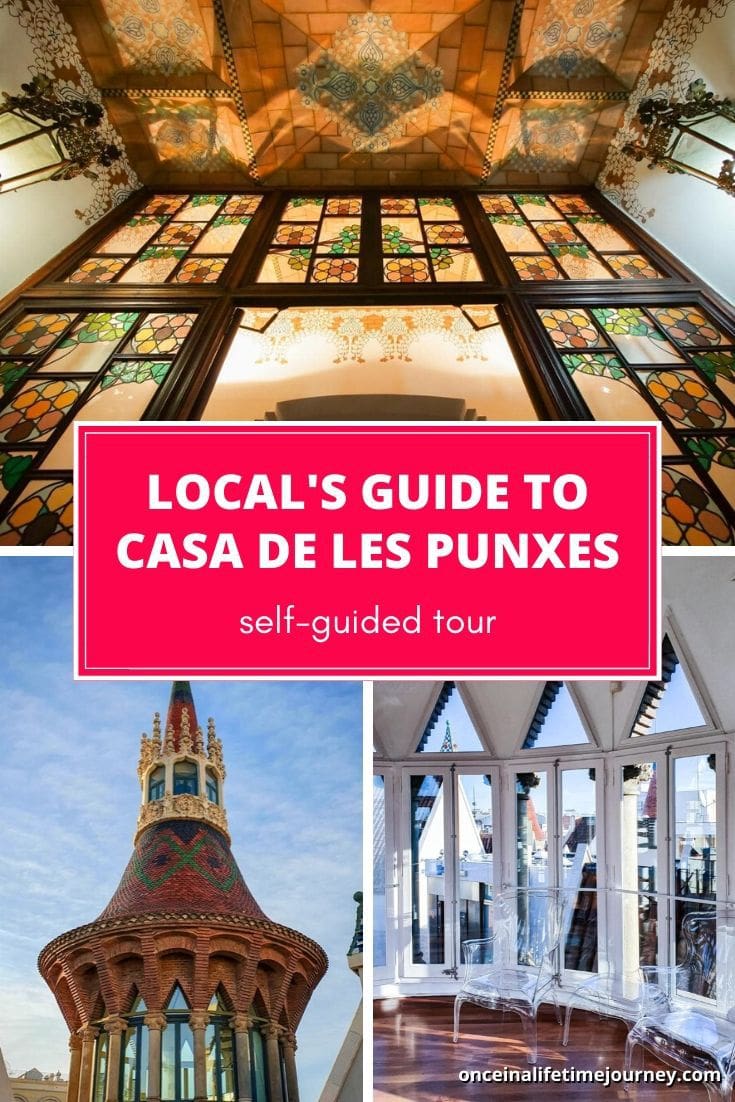
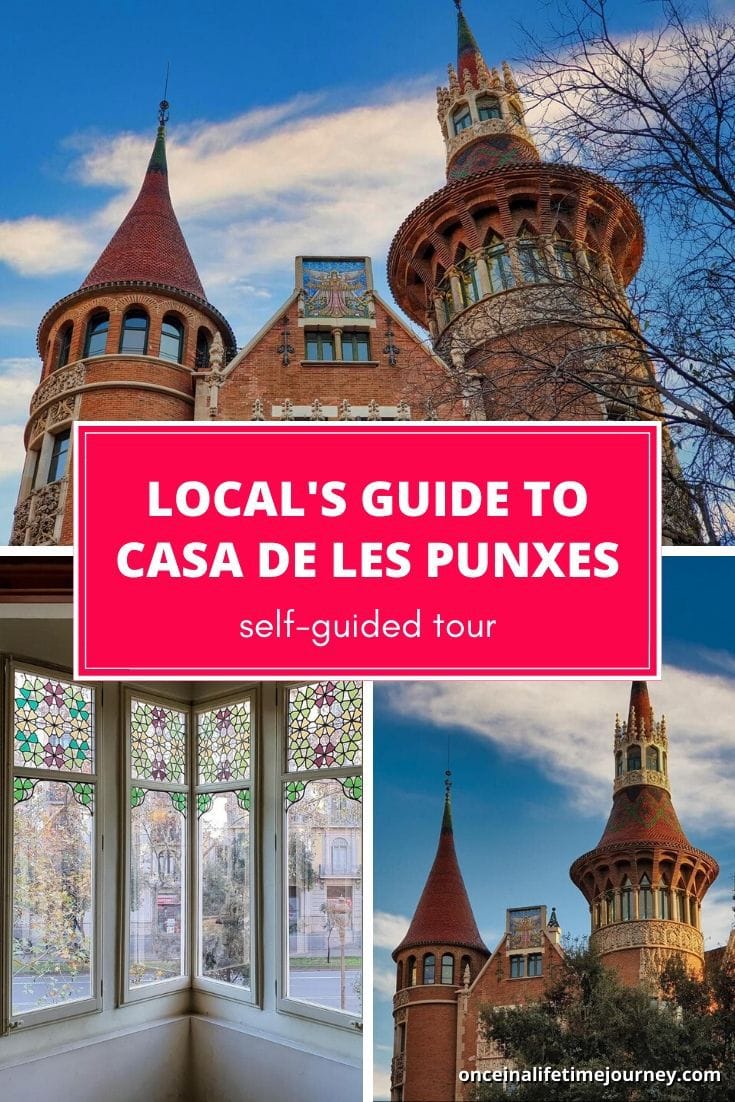
- Check if you need a visa, get help processing it at iVisa.
- Never ever leave without travel insurance. Get affordable coverage from World Nomads or long term insurance from Safety Wing.
- I find all of my flights on KAYAK. Check their Deals section too.
- Search for all your transportation between destinations on the trusted travel booking platform Bookaway.
- I book all my day trips and tours via GetYourGuide, they are the best and their tours are refundable up to 24h in advance.
- Get USD35 off your first booking with Airbnb.
- Compare hotels EVERYWHERE at HotelsCombined and book with Booking.com.
- Compare car rental prices at Rentalcars.com

